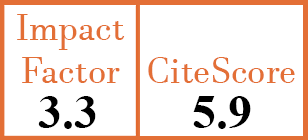Full Papers
Norms-based assessment of patient-reported outcomes associated with adalimumab monotherapy in patients with ankylosing spondylitis
M. Kimel, D. Revicki, S. Rao, D. Fryback, D. Feeny, N. Harnam, C. Thompson, M. Cifaldi
CER4354
2011 Vol.29, N°4
PI 0624, PF 0632
Full Papers
Free to view
(click on article PDF icon to read the article)
PMID: 21813060 [PubMed]
Received: 03/12/2010
Accepted : 14/02/2011
In Press: 31/08/2011
Published: 31/08/2011
Abstract
OBJECTIVES:
To compare the impact of ankylosing spondylitis (AS) on health-related quality of life (HRQL) and of adalimumab on initial and sustained improvement in HRQL for patients with active AS versus the general US population.
METHODS:
Data from the 5-year ATLAS trial were analysed. HRQL burden of AS and treatment impact on HRQL were assessed by comparing health status and utility scores from ATLAS (Short Form 36 Health Survey [SF-36] and Health Utilities Index Mark 3 [HUI3]) with population norms.
RESULTS:
Baseline scores for all measures were comparable between adalimumab and placebo. All scores for both groups were significantly worse than general population norms (all p<0.0001). Within- and between-group improvements in SF-36 Physical Component Summary and SF-6D scores from baseline to Weeks 12 and 24 were clinically relevant for patients receiving adalimumab. For patients initially randomised to adalimumab, HRQL scores improved from Weeks 25 to 52 and remained relatively stable through 3 years but remained lower than for the general US population at all time points.
CONCLUSIONS:
Findings demonstrate a significant burden of AS on HRQL. Treatment with adalimumab significantly improved physical functioning and other measures of HRQL compared with placebo. Clinically relevant improvements in HRQL outcomes over 3 years represent a significant benefit of adalimumab. Because of the advanced AS disease, patient health status remained below that of the general population. Treatment earlier in the course of AS may be needed to restore HRQL to the level of the general population.


